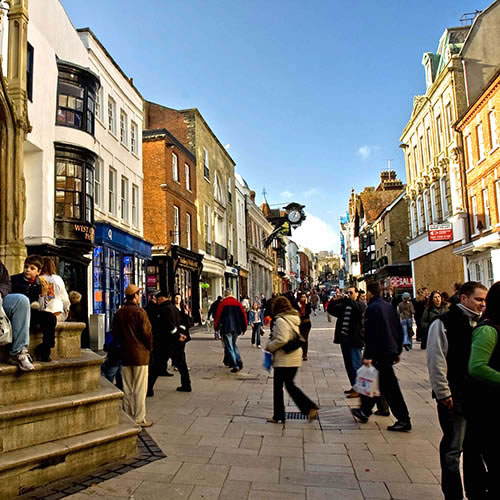Independent retailers opened more shops than were closed in 2016, new data has revealed.
Figures for the UK from the London Data Company (LDC) and British Independent Retailers Association (Bira) found that independent stores saw an increase of 159 shops in 2016, which is a 36 per cent increase on the previous year, when 117 shops were opened.
Chain retailers remained in decline with a net loss of 896 shops in 2016, compared with a loss of 498 shops in 2015.
In 2016, independents accounted for 65 per cent of all retail and leisure units in the UK – unchanged from the previous year.
A total of 29,083 independents either opened (14,621) or closed (14,462) stores in 2016.
Comparison goods shops, which included electrical retailers, saw a two per cent drop in shops, compared with a 1.5 per cent decrease in the previous year. This was a net decrease of 635 units, increasing on 2015’s figure of 487.
Broken down into regions, the East Midlands showed the greatest increase of independents, growing by 87 units.
Greater London continued to see the greatest decline of independents, losing 154 units. However, this was at a slower rate than 2015, which saw a loss of 212 units.
Scotland saw a boost in the number of independents, growing by 130 units in 2016, compared with an increase of 75 units in 2015.
Glastonbury had the highest percentage of independents at 85.6 per cent, while Salford had the lowest at 18.1 per cent – against a UK average of 65 per cent.
High streets saw an improvement, from a net increase of 119 units in 2015 to an increase of 167 units in 2016. This represented a year-on-year growth of 40.3 per cent.
Shopping centres continued to see a net decline, falling by 0.22 per cent, while retail parks edged up by nine per cent.
LDC director Matthew Hopkinson commented: “Independents are becoming ever more important to our high streets. Year by year, the net gain of small businesses is accelerating, even as the net loss of chain stores increases.
“Not all towns, or even regions, are benefiting from that growth, though. The East, South-East and South-West of England saw a fall in the numbers of independents in 2016. None, though, saw as big a fall as Greater London, with its rising rents. That challenge is to be amplified over the next five years by rising rates bills as well.”
He added: “The high levels of openings and closures among independents must be seen as a sign of continued buoyancy in our towns. But there is no room for complacency – with a gain on balance of just 159 shops on the back of more than 29,000 openings in 2016, it would take very little for net gains to become net losses.”
Bira chief executive Alan Hawkins said: “It’s good to have some positive news at last, especially in Scotland. It’s clear that the real winners are those areas where the customer has to be present, such as hair and beauty. Service, leisure and convenience stores all showed good positive net openings, with only comparison shops doing worse. The truth that most Bira members are in this oddly-named category and is an issue we and our members are working hard to redress.
“Given that there are over 100,000 independents in the top 500 towns, this is news to celebrate, as is the fact that 65 per cent of all retail and leisure outlets are independents. The fact that net growth is still in the low hundreds means no let-up in our effort to convince Government that support is needed. Without them, it would be a much emptier exchequer. The next few LDC surveys will make interesting reading, as the Government has failed to deliver the fundamental rates reform we were looking for, and we expect some economic realities to hit home.”


